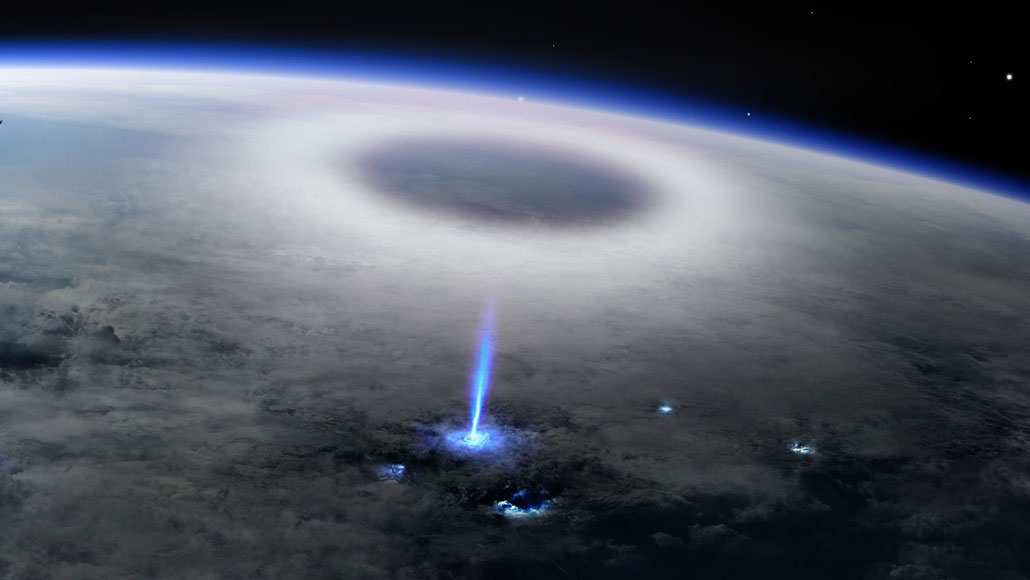
The International Space Station spotted an exotic type of upside-down lightning called a blue jet (illustrated) zipping up from a thundercloud into the stratosphere in 2019.
DTU Space, Daniel Schmelling/Mount Visual

The International Space Station spotted an exotic type of upside-down lightning called a blue jet (illustrated) zipping up from a thundercloud into the stratosphere in 2019.
DTU Space, Daniel Schmelling/Mount Visual